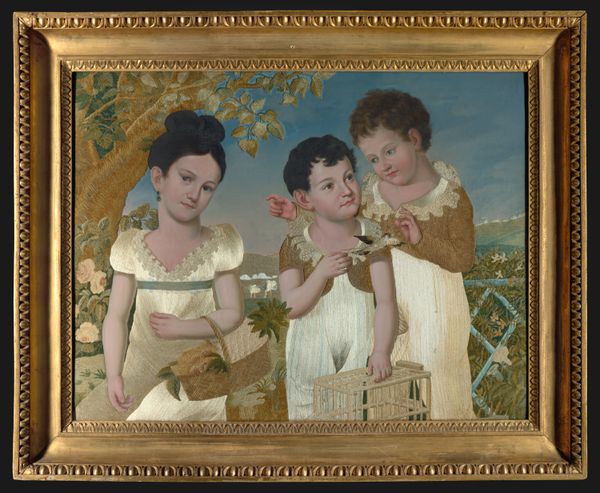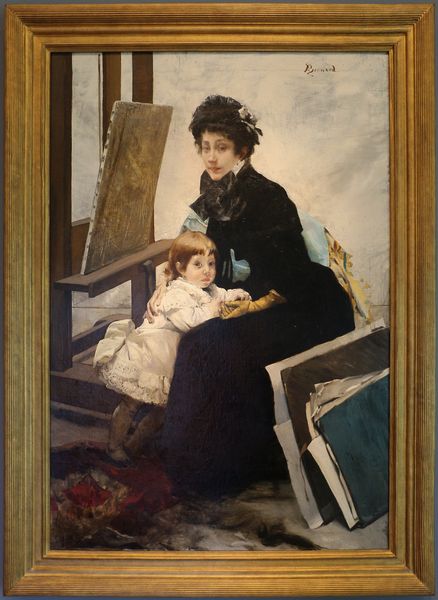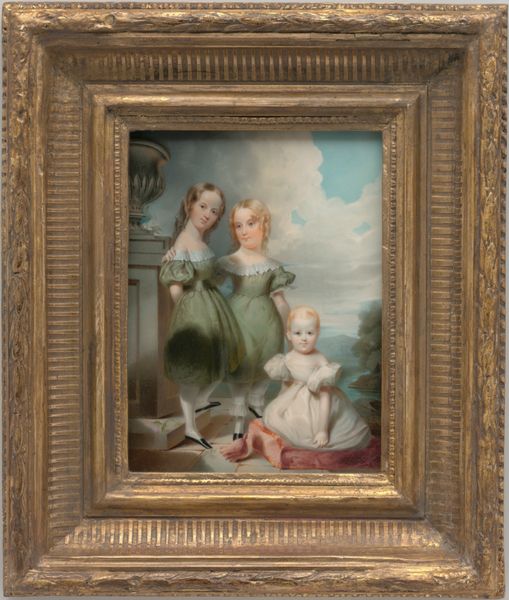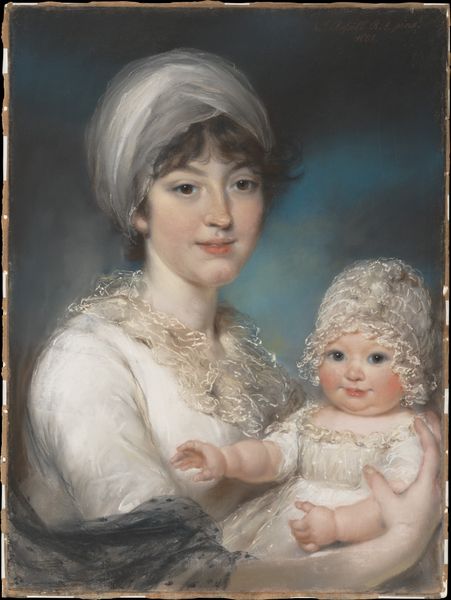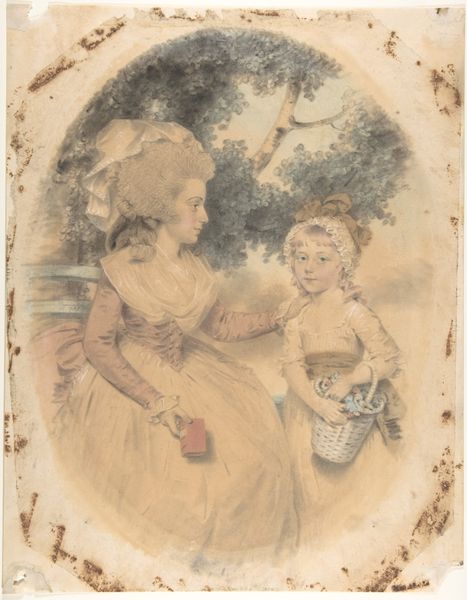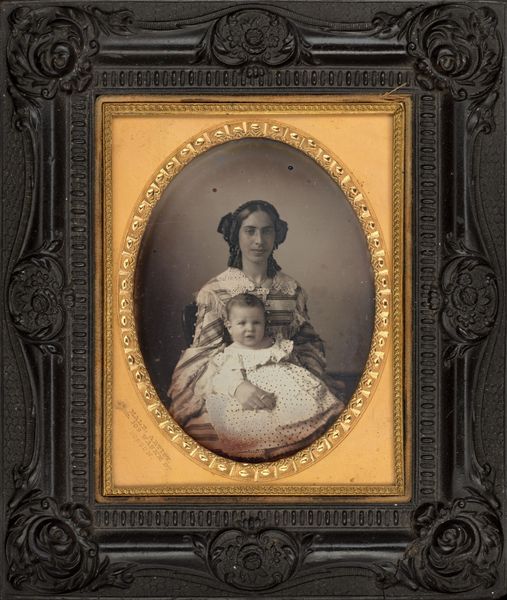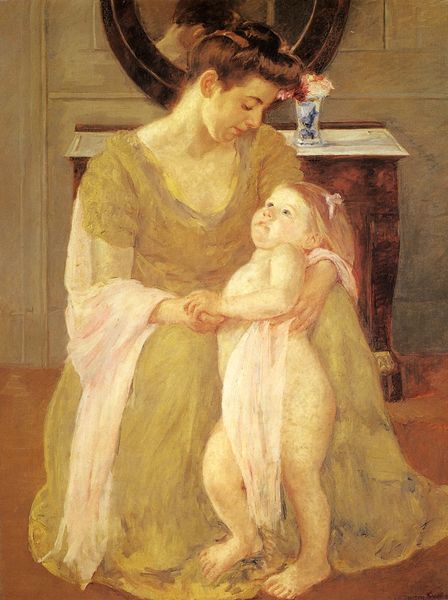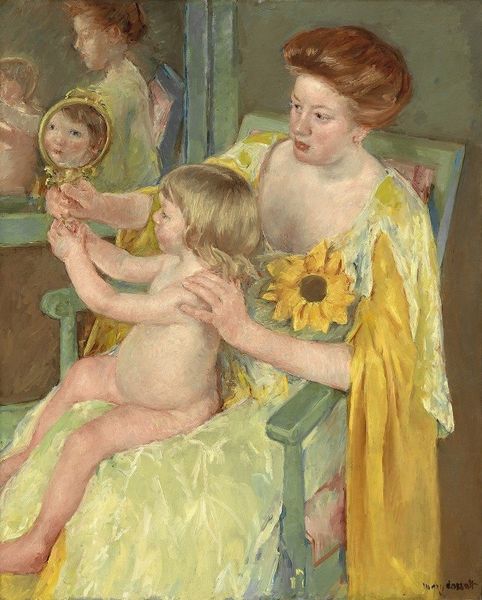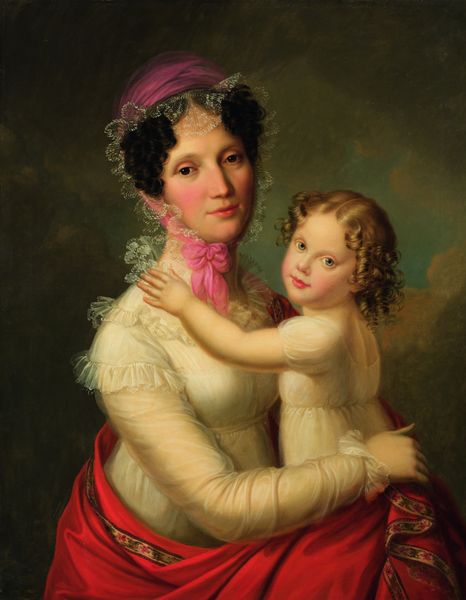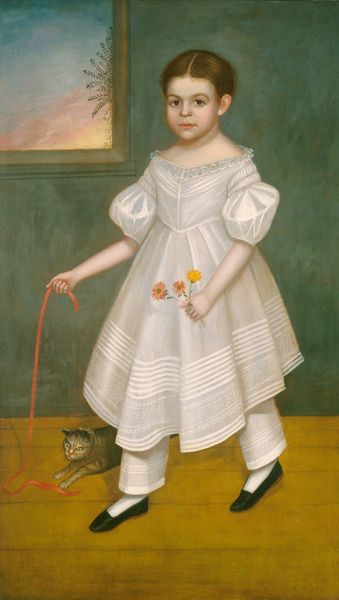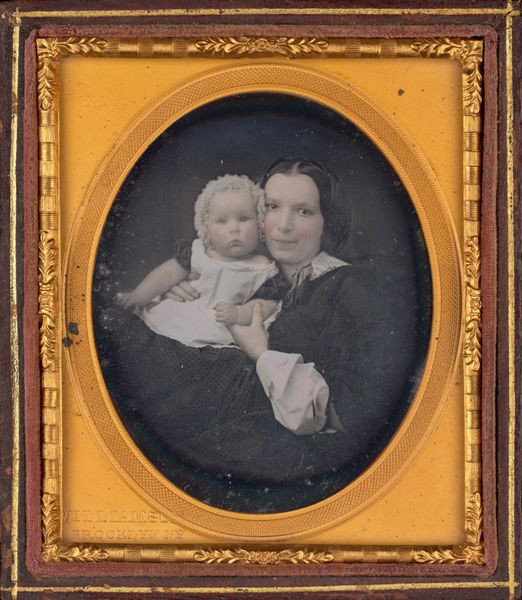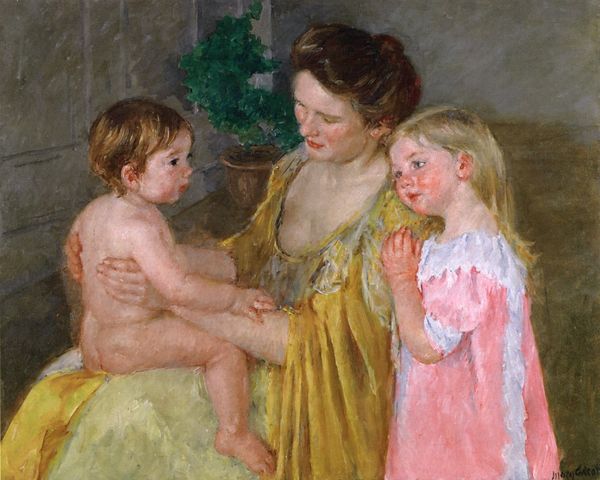
Portrait of the Princess di Ottaiano and her son Carlo 1814
0:00
0:00
mixed-media, painting, textile
#
portrait
#
neoclacissism
#
mixed-media
#
mother
#
self-portrait
#
neoclassicism
#
painting
#
textile
#
child
#
classicism
#
history-painting
#
decorative-art
#
portrait art
Dimensions: 99.1 × 81 cm (39 × 31 7/8 in.)
Copyright: Public Domain
Curator: This artwork is titled *Portrait of the Princess di Ottaiano and her son Carlo,* dated 1814. It’s currently housed at the Art Institute of Chicago. Quite the striking image, isn't it? Editor: It really is! The portrait almost looks like it's been embroidered. What immediately grabs my attention is the tension between the rather rigid, formal pose and the seemingly domestic setting. It feels… staged, yet intimate. How do you interpret this piece, considering its historical context? Curator: Good eye! Considering the Princess's social standing, it's essential to view this work as more than just a mother-son portrait. The princess likely commissioned this to project a certain image: perhaps of maternal virtue and dynastic continuity, values prized during the Neoclassical period following the tumultuous years of revolution and Napoleonic wars. Notice how the delicate embroidery, probably by the princess herself, blends high art with domestic craft. How does that make you think about the role of women and art in this time period? Editor: That’s fascinating! The fact that she might have made it herself definitely shifts my perspective. So, this artwork would function almost as a piece of propaganda, shaping the public's perception of the family and, potentially, legitimizing their rule. Were such self-portraits common during this time? Curator: Precisely! This connects directly to how the elites, the royal families aimed to promote their standing in a changing socio-political structure, following the end of Napolean’s ruling in several parts of Europe. And that kind of display helped with their future standing. It brings the questions of who art is created for, who consumes art, and what public roles were expected in art, and life, at the time. Editor: That makes me consider all the artwork presented at the museum, that, at some level, all pieces tell a story and all people involved want to show their perspective on life! I never thought that, by showing maternal and family bonding it was aiming at getting into public opinions in that moment. Thanks! Curator: It's a perspective shift for us both, indeed, isn’t it? It reinforces the need to analyze art as an artifact embedded within a specific socio-political landscape, rather than merely appreciating its aesthetic value.
Comments
No comments
Be the first to comment and join the conversation on the ultimate creative platform.
